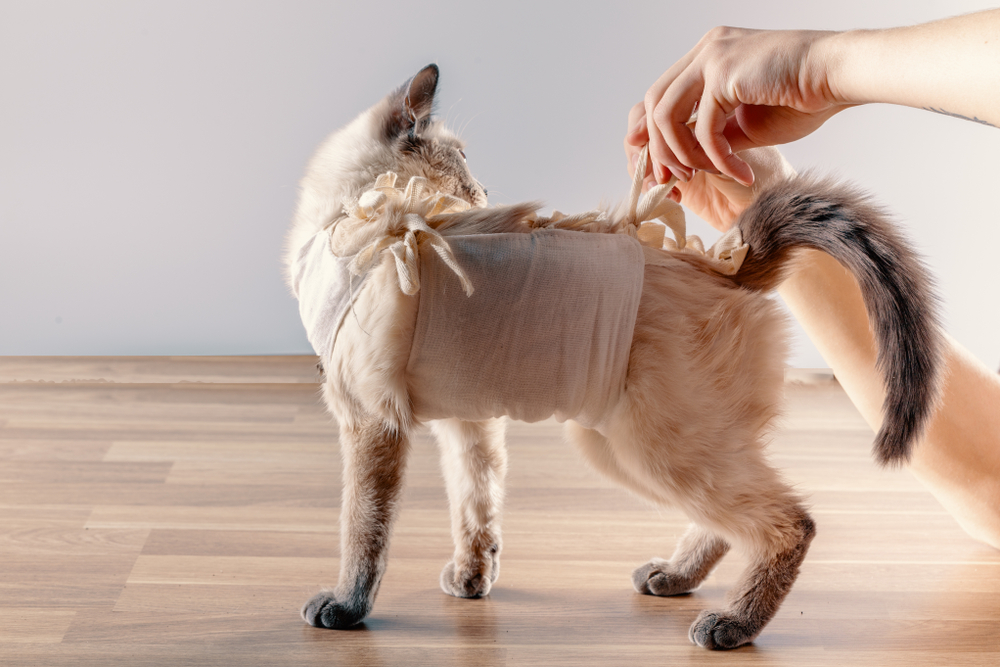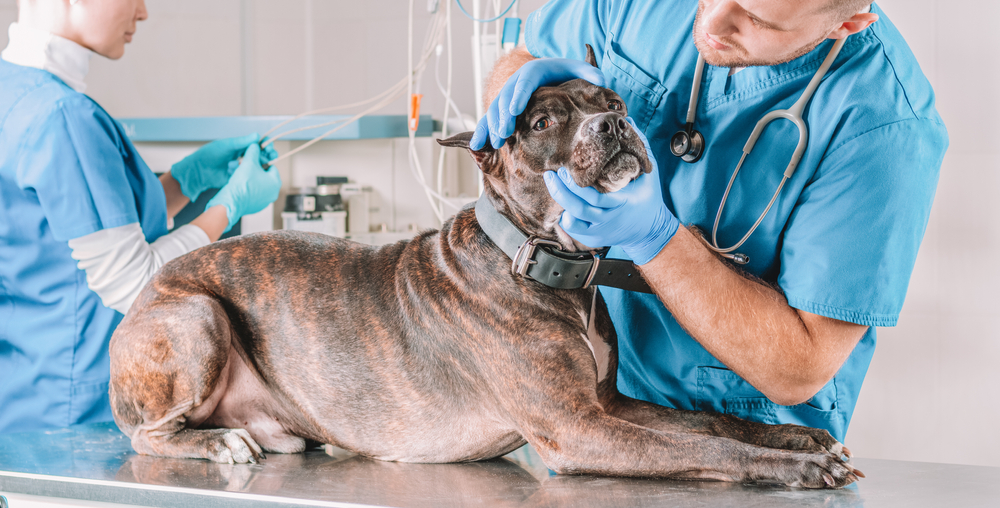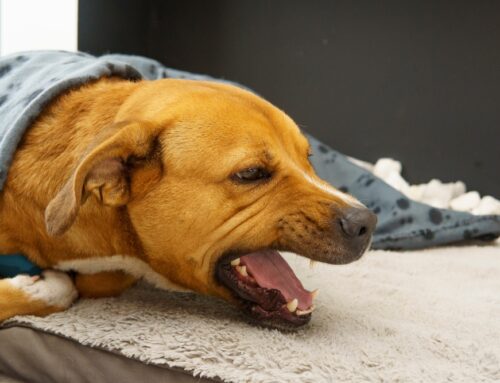In honor of National Pet First Aid Awareness Month, our Oliver Animal Hospital team is sharing important tips on administering first aid to your pet. Being prepared to care for your four-legged friend in an emergency will help you keep a cool head, and allow you to provide life-saving care that will keep your pet stable until you reach our hospital.
First, you should create a pet first aid kit to ensure you have the necessary supplies to provide care, and then brush up on the procedures that can save your pet’s life.
How to create a pet first aid kit
When putting together a pet first aid kit, you shouldn’t need to start from scratch. Look at the supplies in your own first aid kit, and then purchase the essentials from the following list:
- Bandage materials
- Absorbent gauze pads
- Gauze rolls
- Adhesive medical tape
- Vet wrap, a self-adhesive bandage wrap
- Non-stick pads for wound bandaging
- Cotton balls or swabs
- Disposable gloves
- Medications
- Benadryl
- Activated charcoal
- Fresh 3% hydrogen peroxide
- Antibiotic ointment (e.g., plain Neosporin)
- Antiseptic wash or wipes
- Saline eye solution
- Artificial tears ointment
- Instruments
- Blunt-ended scissors
- Tweezers
- Oral syringe
- Tourniquet
- Muzzle
- Thermometer
- Small flashlight
- Ice and hot packs
- Liquid dish soap (e.g., Dawn)
- Towels
- Styptic powder for torn nails
Check your pet first aid kit every few months to ensure you have ample supplies, and that nothing has expired. For example, check the freshness of your hydrogen peroxide. Old hydrogen peroxide loses its fizz, and will not be effective at inducing vomiting in your pet if needed.
How to administer first aid to your pet
When administering first aid to your pet, keep in mind that they’re likely frightened and in pain, and may lash out in fear or discomfort when you apply a bandage, flush a wound, or try to move them. Before performing any sort of care, muzzle your pet for safety, provided they are not in respiratory distress. If you do not have a muzzle, you can use a thick towel or blanket to create a barricade between your pet’s teeth and your hands as you care for them.
Although you may have a pet first aid book stowed in your kit, here are a few of the most common situations your pet may encounter, and how to provide first aid:

- Burns — If your pet stumbles into a campfire or tries to snatch a hamburger off the grill, they can suffer from painful burns that require immediate cooling. Apply a cold-water compress to your pet’s burn to help soothe the damage. If your pet suffers a chemical burn, irrigate the area with running water.
- Seizures — Regardless of the cause of your pet’s seizure, the care they need is the same. Try to prevent your pet from injury by falling off furniture or down stairs, using blankets or furniture as barricades. Use caution when handling your pet, as they may not be aware you’re there to help, and can bite out of fear. Once your pet’s seizure is over, keep them calm and quiet as you travel to our hospital for treatment.
- Fractures — Refrain from moving your pet as much as possible to avoid further damage to the broken bone. Create a stretcher from a piece of wood or other sturdy item, and use a blanket to secure your pet to the stretcher. Avoid placing a splint, as an improperly placed splint can do more harm than good.
- Bleeding — Apply pressure with a thick gauze pad for at least three minutes to help your pet’s wound clot. Avoid checking for bleeding every few seconds, as this will disturb the clot. Place a thick, clean bandage once you’ve verified the bleeding has slowed or stopped. In severe bleeding situations, you can place a tourniquet on the bleeding limb for 15 minutes at a time, releasing it for 15 to 20 seconds to prevent tissue damage from poor perfusion.
- Toxin exposure — If your pet has been exposed to a toxic substance, whether a chemical, food, or medication, contact an animal poison control helpline immediately. Their expert veterinary toxicologists will provide the best courses of treatment at home and at our hospital.
Keep in mind that first aid is not meant to replace veterinary treatment. Instead, keep your pet stable with these first aid measures until you can reach our south Austin veterinary hospital. If your pet experiences an emergency and requires urgent care, contact us immediately.







Leave A Comment